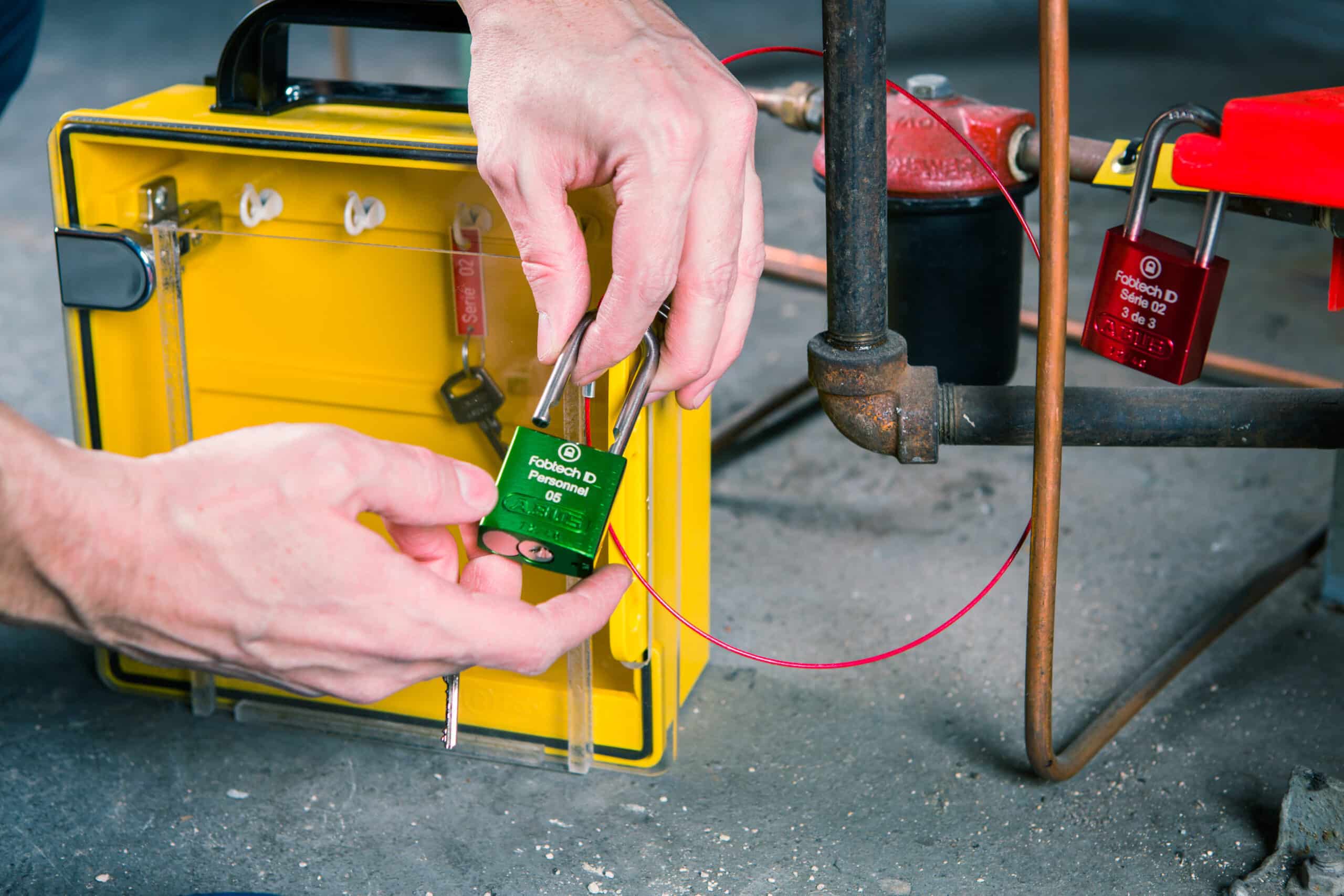LOTO : Different types of locks for different purposes


Methodology Overview for Implementing a Functional Lockout Tagout System
10 November 2021
Too often, hundreds of thousands of dollars in time and money go up in smoke because the lockout tagout system is not functional. Such a system has ramifications in many processes in addition to being an administrative mitigation measure that prevents High Potential events (HiPos) and Serious Injuries and Fatalities (SIFs).
It is very important to properly plan your lockout tagout project before taking action. This is especially true in larger facilities as the procedures can take months to write out completely. In order to provide a structure for the success of its projects, CONFORMiT has been honing its OSHA compliant hazardous energy isolation management methodology for the past 35 years.
Most people want to plan the bare minimum, and simply get to work. But that can be costly. Your team will have enough on their plates at the implementation stage without adding confusion and bad decisions on top of that. Setting up proper foundations saves a lot of time. Clarity increases the velocity of the resources involved by avoiding mistakes and doubts. It also increases profitability in the years to come by ensuring that the system is easy to maintain by the different stakeholders.
The first thing you want to do is standardize your approach. This means establishing guidelines that will help your team manage potential unforeseen situations and discrepancies before you start building your lockout tagout procedures.
Aside from setting up your LOTO implementation standard, you will need to setup your overarching program. The program usually contains the information relative to the:
The common mistake people make with their program is to leave them vague. Everybody’s played a board game with a loose rulebook. When everything runs according to plan it’s fine, but there’s always a brother in law that manages to find themselves in a situation not defined in the rulebook. Then everybody argues, tempers rise until someone finally makes the decision to cut it one way or the other. While fine for a board game, these situations are far from ok when it comes to managing the safety of employees. What if the decision that was taken on the spot leads to an employee getting injured or worst, killed? Make sure your program covers all the edge cases like:
You might not have realised it yet, but the endeavor you are about to embark on will generate a gigantic amount of data. From machines to isolation devices to procedures, all of this information will be related to each other. Individual valves will need to be used to control the energy on multiple machines. Standard instructions within your company you be displayed on each individual procedure. How do you plan on making sure the information available on each procedure is up to date, that the valve you’ve moved or replaced as part of a maintenance has been updated on all the procedures it was used on? Determining the data management strategy and the tools that go along with it will help you build a sustainable system.
Some of the larger facilities can easily spend up to $500,000 to set up the lockout tagout procedures. Think about it: 1500 machines, 5,000 isolating devices to label, up to 3 hours to write, verify, approve each procedure… A lockout tagout procedure dataset is like a house. If you don’t maintain it according to best practices of the industry, it will decay and you will lose your investment.
An important aspect of lockout tagout – and this is the case with most administrative risk controls – is that we cannot afford to wait to monitor the performance of our system. Since these measures are administrative, they can be easily bypassed by the teams if they are not adapted to the field. Implementing performance review activities during the implementation phase of the project allows us to operate a feedback loop (e.g., comments, non-conformities to the program) and adjust quickly. Employee adoption is key! In addition, you want to measure the health of the system itself (e.g., the level of approval of procedures) in order to keep your investment at its maximum value.
A functional hazardous energy management system is a major investment in money, no doubt about it. However, this type of project will require time and expertise from internal resources that are probably already busy with daily operations and other special projects. In order to justify this new assignment to executives – be it the COO or CFO – it is important to build a business plan that will demonstrate an understanding of the financial risks of the project and the return on investment (ROI). Yes, a functional LOTO system does generate profits for your organization. Without a serious study of the current and desired situation, this aspect may be overlooked.
A lockout tagout implementation or improvement project has technical, regulatory and organizational aspects. By nature, these are complex projects to manage. It is important to implement project management processes that are in line with industry best practices in order to manage resources, budget and schedule. Minimally, these processes should include:
Poor project management will stretch your project which will lead to the loss of momentum, credibility and mobilization of resources.
Hazardous energy isolation is an activity that has been mastered by most trades for a long time. But, as with professional sport, having a roster of highly qualified players doesn’t mean you’re going to win. Having a plan and therefore people and process to check whether this plan is executed will determine whether you’re going to win the cup or get cut out off the playoffs.
Now to start the fun part, implementing. There are four major steps in the implementation phase:
The only other thing you have to consider during the implementation phases is how you want to roll this out to your employees. Do you want to roll out your new Lockout Tagout program as a whole once everything is done, which could take months or years, or would you rather deploy it incrementally as areas are completed? Whatever your decision may be, you’ll have to figure out where to start and when you can consider it done.
When dealing with a large number of procedures – and complexity in general you will want to breakdown your rollout out by pieces called increments.
1. Test your procedures as soon as possible in a small test area so you can work out any bugs early. Finding out the problems early helps keep rework to a minimum. For example, if you’ve already written 100 procedures before you realize that you should have been including a step to tag each item you’re working on, that might not be too bad. But what if you finish 2,000 procedures and don’t notice this omission until you start using the procedures?
2. People are waiting to use the procedures. Don’t make the whole facility wait until all the procedures are done. That would be like a farmer clearing all his land before planting any crops to feed his family. It just doesn’t make sense. He would clear a certain amount of land at a time so they always have food to survive.